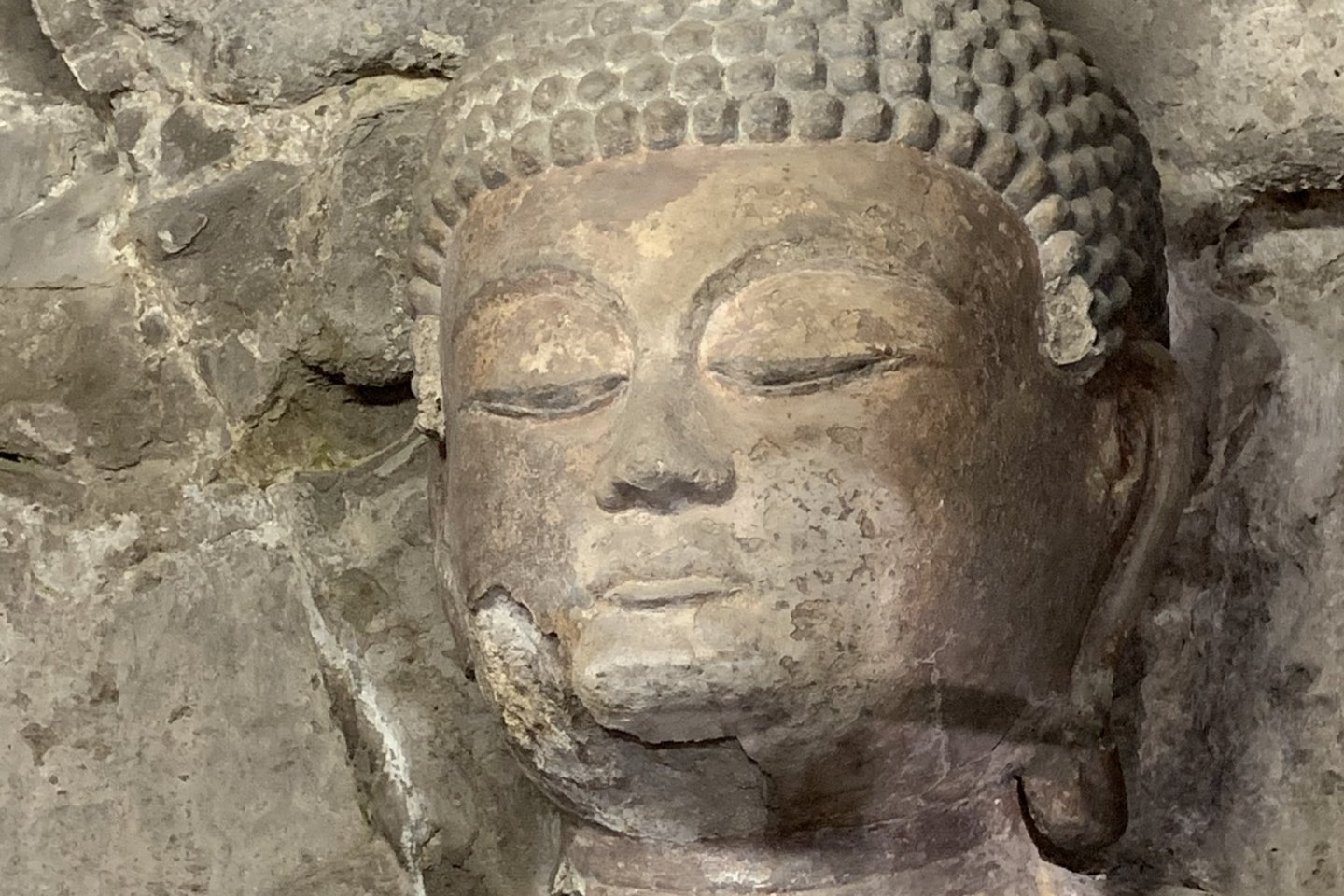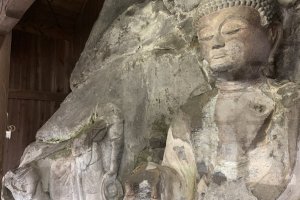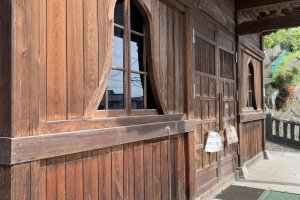Oita prefecture is the unrivaled heartland of magaibutsu (Buddhist stone reliefs) in Japan. While the former province of Bungo is famous today for its plentiful onsen (hot springs), it is also home – somewhat mysteriously – to the largest number of old lithic carvings in the country. Included among these are the celebrated national treasures at Usuki.
A little-known urban relic
I recently went in search of one of Oita’s lesser-known reliefs, the Motomachi magaibutsu. Unlike most of the region’s carvings, which are dispersed about the countryside, this collection of stone deities is located in a suburb of Oita City itself. But don’t ask a local for directions; it’s an inconveniently long walk from the central station, and far from being a well-known tourist destination.
I went there because longish walks attract me, and soaking in hot springs is nice, but not everything in life. To my mind, pondering a thousand year-old work of art adds a bit of dimension to the day.
The setting
The Motomachi relief is housed in a temple-like shelter on a dead-end street just a stone’s throw from the tracks of the Kyudai railway. There isn’t much around, houses and a highway, though just around the corner is an old tumulus (but don’t expect much there). As you enter through the gate and approach the shelter, you notice to the right an exposed stone cliff; it appears that carvings might have once adorned this outcropping, but are now effaced. On the double doors before you hangs a sign that says they shall be kept shut; but the doors are unlocked, and there is no fee to enter.
The characters in question
Inside the doors is a central carving of the Yakushi Buddha. It is nearly three meters in height, larger than most reliefs, with a face quite serene but also sadly deteriorated. According to the literature, the damage to the carving is the work of salts that have soaked into the volcanic rock over the years. Yet it is surprising that so much of the central figure still exists; the attendant deities on either side, Fudo Myoo (the Warrior King) and his disciples Cetaka and Kongara, on the right, and Bishamon (the God of Wealth), Kissho and Benzaiten (I think), on the left, are largely disintegrated, far beyond the point of restoration. (Nor can I understand how the identities of the deities on the left were construed; they are no more than fragmented, ghost-like outlines on the stone.)
An enduring image
The oldest photo of the Yakushi figure, dating from 1915, shows it protected by an open shed under a bulrush roof. Indications are that as early the Edo period efforts were made to protect the figure, with plaster added in the Meiji or Taisho era to repair the worst damage. Still, it is amazing that the original carving endured as well as it did for so long; the work is believed to date from the second half of the 11th century (i.e. later Heian period, 795 – 1185), and clearly reflects the Jocho school of carving, with obvious similarities to the Jocho Amida of the Phoenix Hall at Byodo-in in Uji, between Kyoto and Nara.
A treasure worth preserving
In recent decades, concerted efforts have been made to save this treasure from further deterioration, including the construction of tunnels under the surrounding rock to divert water, the injection of resins into the carving itself to slow its disintegration, and windows designed to screen out UV radiation. Sensors have been placed on the effigy as well, to detect and record changes in the substrates. In 2013, UNESCO designated the site for further study and preservation.
Once a splendid thing
Yet it appears that nothing will stop the continued dissolution of this venerable icon, which must have been a splendid sight for several centuries after its creation. In those days there would have been nothing to block an expansive view of the wide Oita River, and the distant mountain ranges beyond. Given the natural positioning of the figures, and the unique mise-en-scène, the entire stone retinue would have appeared fluid and lifelike. Among the many reliefs of Oita, it was probably once the most beautiful of all.






























